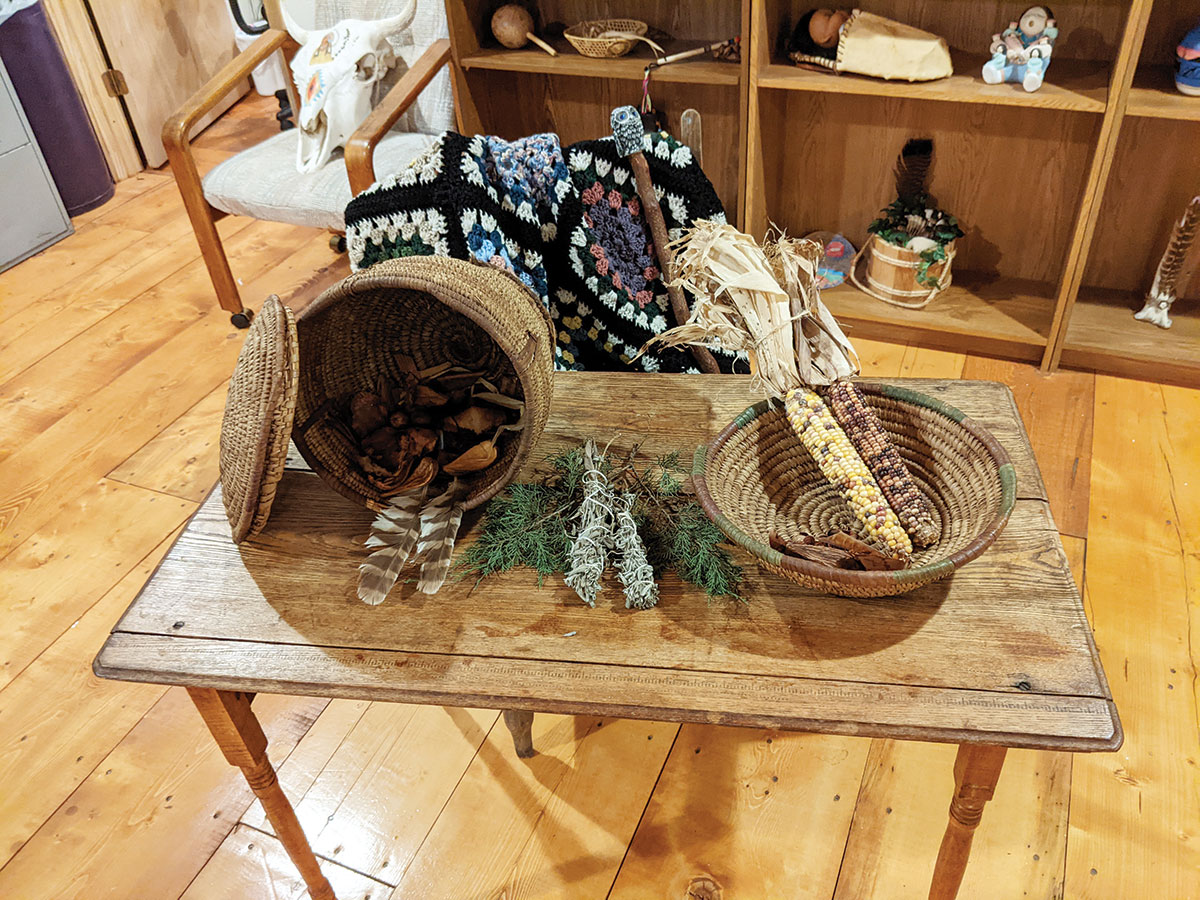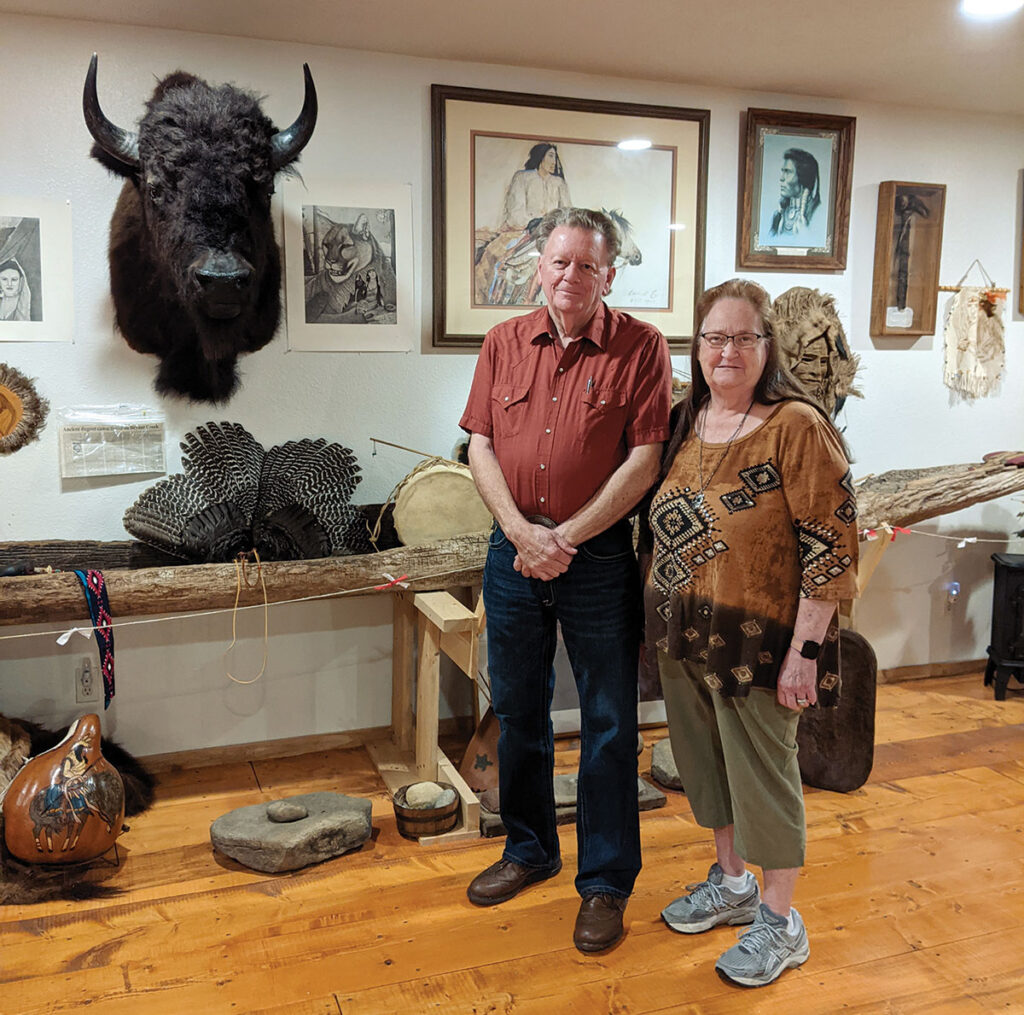
Mansfield, Mo., couple honors their heritage with a Native American museum
Safeguarding and sharing history is a full-time job for Murl and Marjorie Pierson. In the fall of 2016, the Western Cherokee husband and wife opened the Museum of American Indians of the Ozark’s Plateau, proudly representing the heritage of each of their families and a nation.
“To bring people from the Western Cherokee Nation that come in here, something to see. But also to keep alive the stories, the culture and show as many artifacts as we can,” Murl said of the collection and library. Fellow curator Marjorie added. “Making them proud of their heritage.” After nearly 49 years of marriage, the high school sweethearts have forged a working relationship that covers many roles.
The couple is dedicated to sharing their knowledge and artifacts with any guests, Cherokee or not. Visitors come from all over the country, as far away as Alaska, and are helped by the Piersons and a small crew of four volunteers. They work together with the Wilder Home and the Mansfield Area Historical Society in sending each other guests.
Some visitors come to use the research library. They have several roll books including the Baker, Dawes, Oguin and Mill rolls, among others. They have names and records for the early settlers from before rolls were taken. Murl referred to this section as the blueprint, with books listing names and determinations.
“How they lived, where they lived, what they’ve done, what they ate; everything that you can find about the culture,” is in another section of the library that Murl pointed out. There are books about herbal and crystal medicines, natural healing and ceremonies. While books from the collection cannot be taken out, the museum provides a comfortable place to research and is open to the public six days a week.
When an item is loaned to the museum, a record is created with the loaner’s name, contact information and a family member as well, to ensure the artifact makes it back to the family.
“We have a lot of artifacts in here on loan. We believe that it needs to stay with the families,” Marjorie said.
Among the many artifacts, the museum has hand-woven baskets, cradle boards used to carry infants, wings made from feathers worn in ceremonies, animals stuffed and mounted, buffalo hides, drawings, jewelry, handmade shoes, arrowheads, hand crafted weapons, musical instruments and maps. They estimated 75 percent of the artifacts are on loan.
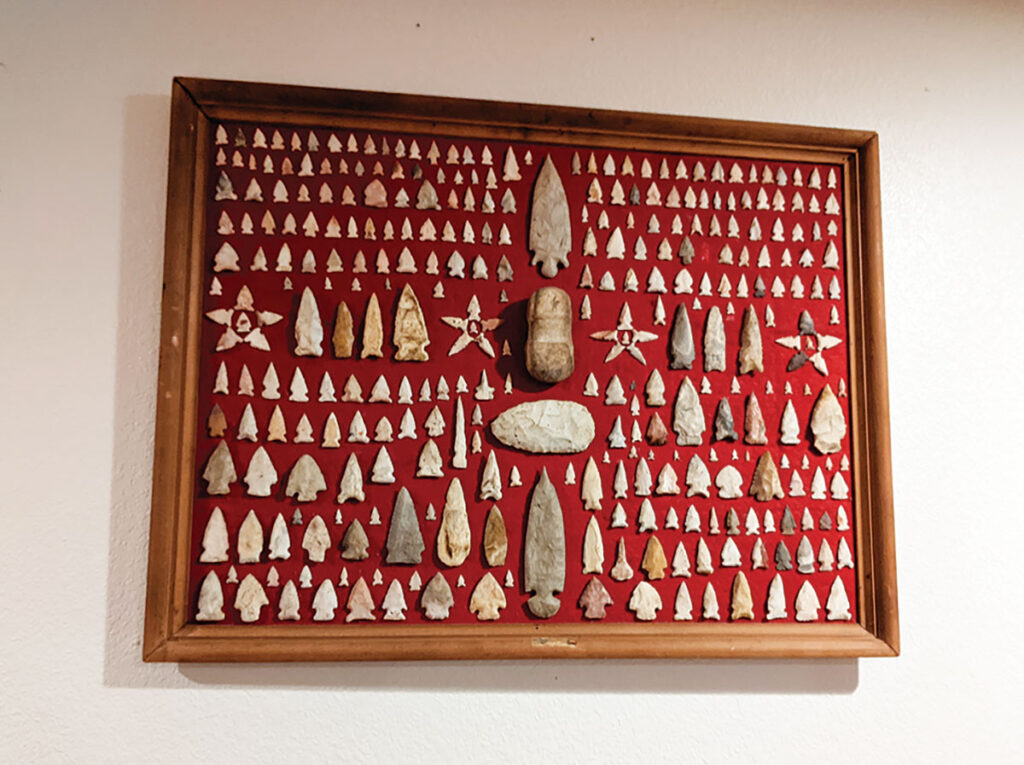
“When the Mansfield third grade goes to study Native American History, they bring them up here,” Murl said.
While their goal is to educate the public, he has fun teasing the kids about how the buffalo head ended up on the wall. Marjorie commented on how quiet the room full of kids gets when they are listening to history and stories.
One of the most prominent items on display is a dugout canoe. It measures 27-feet long and is intact, end to end; a rarity for dugouts. It was discovered at a swimming hole at Vera Cruz on the Bryant Creek in Douglas County, Mo., and later loaned by cousins on Marjorie’s side of the family. They had the cypress canoe carbon dated and determined it was from about 1853 (give or take 17 years in either direction).
“It was a joy to get in here, too,” Marjorie said of the canoe’s story. There was an error in initial communication about the canoe’s size. They were told it was 16-feet long and planned for it’s space in the museum and transporting it. While it required a second trip with a longer trailer and a crew to pick it up, the main room was large enough to contain all 27 feet.
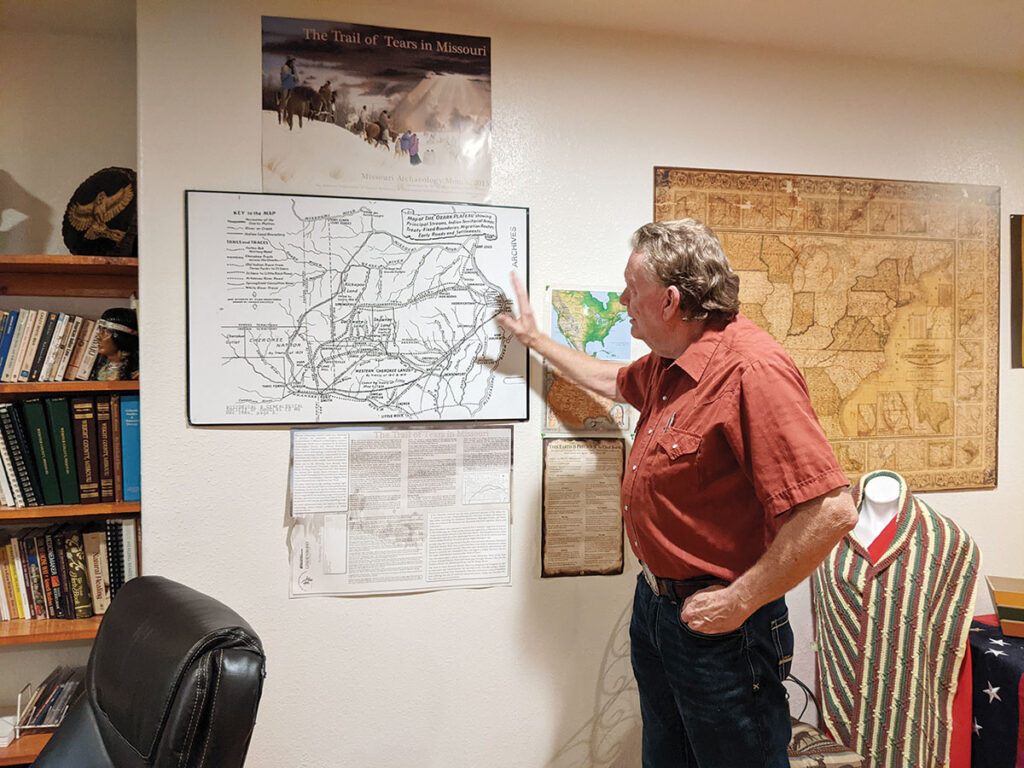
Next to the library, the museum has a large, yellowed map of the U.S. from 1850. It would take a careful eye to spot that it’s not an original. The map’s owner would not sell it, but he allowed Murl to borrow it and have it professionally copied. Murl could not remove it from the glass and had to sign a release stating it never left his possession. West of Missouri on the map is labeled “Indian Territory.” They answered many questions about the history of Native Americans and the Trail of Tears.
Both curators take their Native American heritage seriously, and have taken on significant roles in running the Western Cherokee Nation. Murl is the nation’s executive director and tribal Council Speaker, having worked with them since 2002. Marjorie is the office manager for the nation. In 2014, they were faced with a decision to either manage the 47,000 files housed in 21 metal filing cabinets, kept in Arkansas at the time, or dissolve the nation. They took on the task and added 10,000 more files since. Murl is president of a seven-member board that oversees the nation’s activities.
In addition to running the museum, the Piersons also opened a food pantry on the side of the building to serve the Mansfield area. They said sometimes people get laid off from work or injured and the food pantry helps them. Orderly shelves and refrigerators sit in rows in a small room where four volunteers take turns calling people when surplus food comes in or the monthly distribution happens.
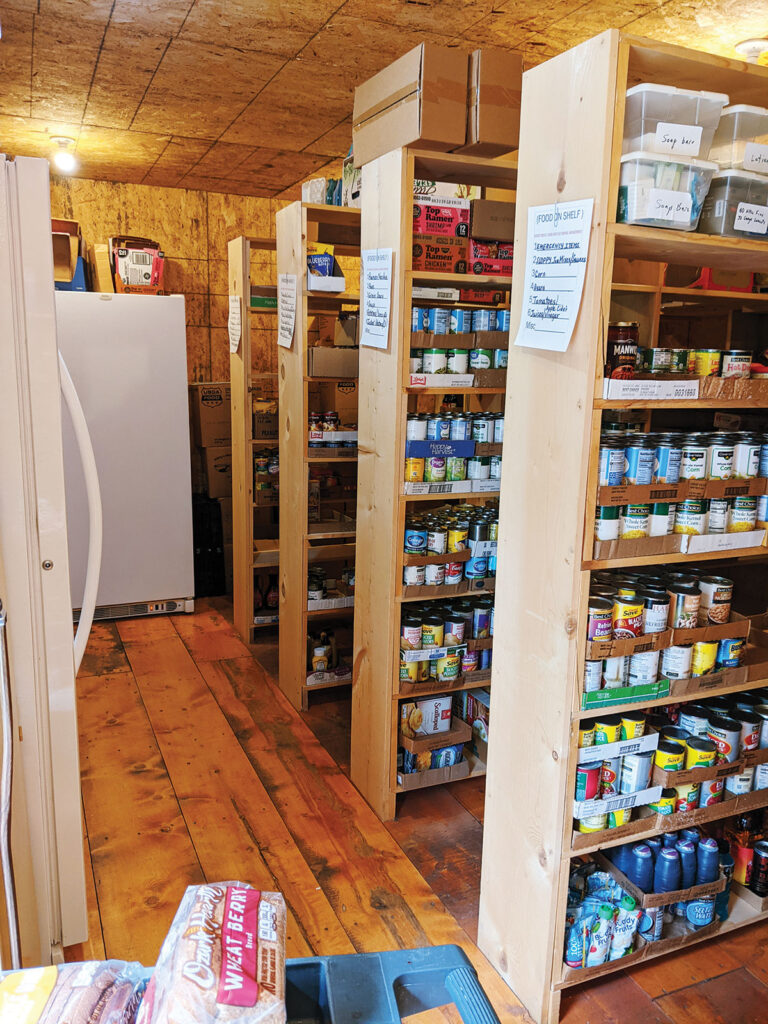
“Town and Country down here is a very good donor,” said Murl of the Mansfield supermarket.
Locals donate money and local farmers donate eggs and produce when they have a surplus. They also get supplies from Schweitzer United Methodist Church in Springfield, Mo.
Determined not to remain idle in retirement, the Piersons have kept busy. Murl said he likes to, “visit with people and talk with them, and do things on my schedule. That’s pretty well what I’m doing.”

